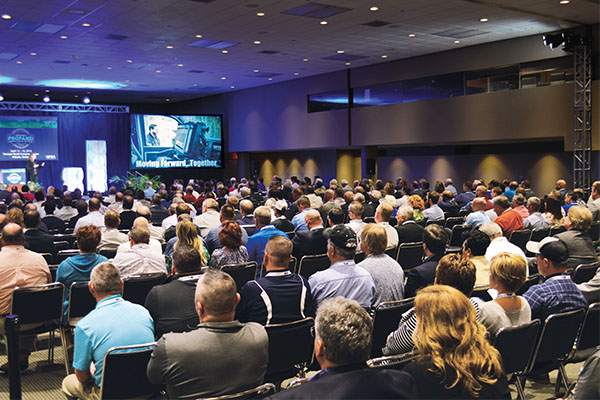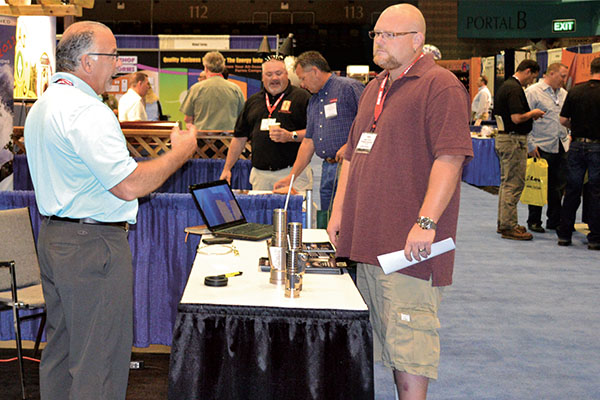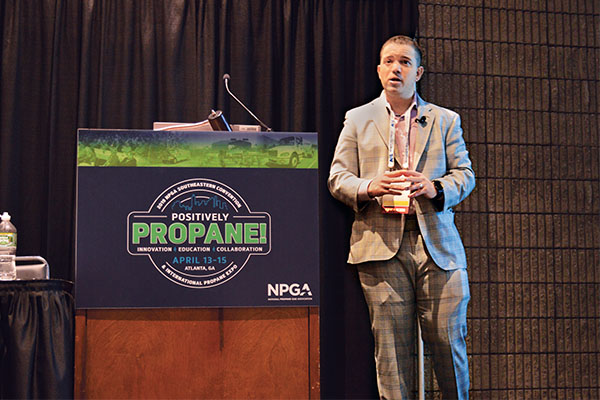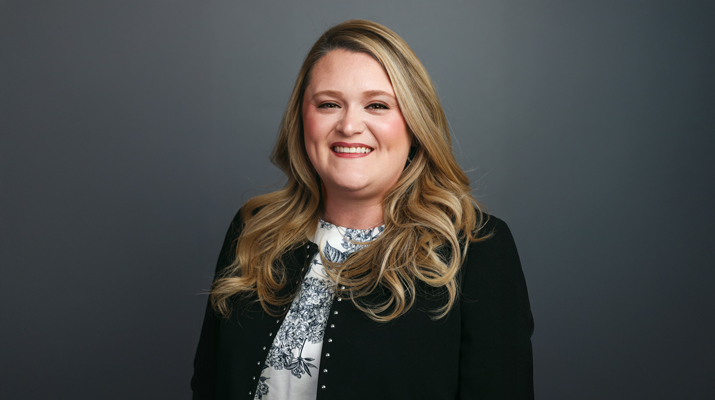Sharpen your follow-up strategy after trade shows
Trade shows offer many opportunities for meeting new vendors, learning from seminars and hobnobbing with colleagues. All those activities can pay off with a fatter bottom line.

Conscientious follow-up after a trade show can help to increase your company’s bottom line. Photo by LP Gas Staff
“A trade show is the best place to see everything that is happening in the industry, and to learn what companies have to offer,” says Alice Heiman, founder of her own sales consultancy in Reno, Nevada, site of the propane industry’s annual Western Propane Trade Show and Convention in May. “Your presence at a show brings you face to face with three groups of people: attendees, speakers and exhibitors. You can learn from each.”
Despite their attractions, though, trade shows can toss monkey wrenches into any organization’s operations. How can you spare the time and money required to send yourself and staff members to a show? And how can you maximize the return you get on all the time and money spent?
The answer lies in smart follow-through when you return from the show. That means keeping the dialogue going with vendors, passing along lessons learned with coworkers and sharing the hottest industry trends with customers.
Doing all that in a way that boosts profits is a constantly evolving skill: Like expert golfers working on their follow-through, successful trade show attendees are always improving the quality of their after-show swing.
Here are some tips for doing just that:
Tip No. 1: Prepare to win
The best follow-through begins before you leave the office. Each person attending the show must plan in advance to take the right steps after returning. That means having an answer to the question: How will I maximize the contacts I make with show exhibitors and other individuals I meet?
“Trade shows provide the chance to communicate with the entire industry under one roof,” says Peter LoCascio, a Salem, Oregon-based consultant. “Each attendee should assume accountability for the time spent away from the workplace and for travel and hotel expenses. There needs to be a personal commitment to spending the money well by following through on new contacts.”
Some organizations are cutting back on expenses by sending fewer people to each show, notes LoCascio. That makes it more important than ever for each person to get the most out of attendance.
Every attendee needs to exercise the best techniques for maximizing their time. Maybe that means collecting business cards, having their badges scanned to receive product literature, scanning QRC codes in booths or taking smartphone photos of new and interesting products (but check the show rules to make sure photography is allowed).
“Six to eight weeks in advance of the show, bring your people together to make your expectations known,” says Heiman. “Tell them how you expect them to dress and to conduct themselves. What kind of notes should they take and what reports will they be making? Suggest that they consider recording sessions and taking photos of the visuals that speakers put on the screen, and that they pick up any interesting handouts that would help their team learn.”
Bonus tip: Have experienced attendees brief novices on the best techniques for getting the most from a trade show.
Tip No. 2: Set specific goals
General goals are useful, but translate them into specific actions. Define your game plan in detail and be able to answer the key question: What do you intend to achieve?

Set specific networking goals to maximize your time. Photo by LP Gas Staff
“Develop specific answers in advance to critical questions,” says Nancy Drapeau, vice president of research at the Center for Exhibition Industry Research. “How many booths will you visit, and which ones? Are there specific educational seminars you will attend? And how about networking events? How will you track your activities?”
Plan your time in concrete terms.
“Get an advance copy of the exhibitor list from the show sponsors,” says LoCascio. “List the products and services you are looking for and draw up a plan to visit the booths of the relevant exhibitors. Avoid walking the aisles aimlessly.”
Reaching specific goals will require effective networking skills.
“If people don’t know how to network, they will not know how to obtain valuable information,” says Heiman. “Teach your staff how to start productive conversations with strangers and how to keep people talking. Make sure they can answer the question ‘What do you do?’”
Networking goals can also be specific. You might require your staff to find 10 new people with whom they can develop continuing relationships. They can do this by attending various networking events, and by splitting up to sit with different people at lunch, dinner and cocktail hour.
“The idea is to learn about the industry trends that will be affecting your company and your customers,” says Heiman.
Bonus tip: If you are going to the show as a group, get more done by splitting up and pursuing individual goals. Don’t walk the show in a pack.
Tip No. 3: Debrief coworkers
When the show’s over, have attendees share what they have learned with their coworkers. What were their impressions of the show? What did they learn from exhibitors about new products, or from seminar speakers and colleagues about critical trends in the industry?
“Set a date and time for a follow-up meeting before you go to the show, to make sure the job gets done,” says Meridith Elliott Powell, sales and leadership strategist based in Asheville, North Carolina. “Decide in advance how the meeting will be structured and how you will debrief. It’s important to tell not only what happened, but also to share your leads. Whom did you talk to? What did you discuss? What will the next steps be? What topics were of interest to you?”
When talking about vendors and their offerings, says Powell, it’s important to go beyond a list of new goods and services, and explain how purchases will integrate into your current structure. What will it take to earn back your investment?
Encourage attendees to present their findings in a way that engages their colleagues. That means more than just standing and reading their notes.
“One approach is to present findings in the form of a quiz,” says Heiman. “Or engage the audience by repeatedly asking for ideas on how what has been learned from the show can be applied to current operations.”
If the show has been particularly extensive, avoid overwhelming the audience with too much material.
“Consider having each attendee pick two or three vital insights discovered at the show, then do a deep dive into each one – perhaps doing additional research on the topic before the presentation,” says Heiman.
Bonus tip: Schedule the follow-up meeting within 48 hours of the time people return from the show, while memories are still fresh.
Tip No. 4: Review performance
Good trade show follow-through includes reflections on how well the attendees utilized their time, and how they might improve their technique the next time around.
“There should be a post-show discussion about how participants performed, including what worked and what didn’t,” says Orvel Ray Wilson, a speaker and coach on trade shows. “Which steps were effective and which were not?”
Consider what you were looking to achieve at the show and assess whether you were successful.
“If something worked, point it out and plan to repeat it in the future,” Drapeau says. “If something did not work, discuss the reason. Was the problem with the show or with your team’s performance?”
Answer the tough questions such as: How could attendees have improved their use of time? Should the business send more or fewer people to the next show, or perhaps not attend the show at all because there are not enough potential contacts?
Bonus tip: Have each attendee prepare a short report on three ways the business can improve its return on investment in attending the next show.
Tip No. 5: Follow up with vendors
Once you’ve briefed your colleagues on the show, follow up with the important vendors. Trying to reach out to everyone will seem overwhelming since you have your regular duties to attend to at the same time. So start with a few who have the most potential.
Above all, say the experts: Make it personal. Remember that the most important reason to go to a show is to build relationships, not to get information.

Attendees should review their performance post-show. Photo by LP Gas Staff
“Write handwritten notes,” suggests Heiman. “In an age of email, these can be especially effective because no one does them anymore. Say things like ‘It was nice to meet you. I had so much fun discussing how the industry has changed over the years. I look forward to continuing our relationship and discussing business trends.’ And include your business card.”
Social media can also personalize your feedback. “Are some vendors active on LinkedIn? If so, connect with them,” says Heiman. “And don’t just connect. Interact by ‘liking’ or sharing posts they have made that would be interesting to people who follow you.”
In some cases, says Heiman, it is appropriate to schedule a phone call: Maybe the person has special knowledge and you want to know if he or she will present virtually to your company.
Bonus tip: Never rely on vendors to follow through. “We have found that exhibitors fail to follow up with 80 percent of their leads,” says Wilson. “Always take the initiative.”
Tip No. 6: Share with customers
Maybe coworkers and vendors are the most obvious people for follow-up. But don’t overlook customers who could not attend the show and who will appreciate your thoughtfulness and expertise if you inform them of what you learned.
“Communicating your show experience with customers can be one of your best marketing tools,” says Powell. “You want to stay visible to your customers, and you want them to see that you are staying knowledgeable about the industry. Consider sharing the top three things you took away from the show, and explain how they will benefit your customers.”
Bonus tip: Updating your customers in person is always preferable, but consider including some select information in your social media posts and your newsletter. Or cover the topic in a webinar or video you email to your customers.
The big picture
As the comments in this article suggest, getting the biggest bang from the buck invested in attending a trade show depends on how you sweep up after the dust has settled and the glitter has faded.
Smart trade show follow-through begins before you even leave for the show and continues long after you have returned to your workplace and debriefed your coworkers. Done right, the time and effort involved in attending a show can pay off in happier customers and a fatter bottom line.
“The convening of such a large audience at a trade show creates a profound and impactful experience for everyone attending,” says Drapeau. “Face-to-face marketing remains very strong in today’s world, despite the explosion of digital communications such as social media. In fact, the two channels complement each other.”
So, you are going to exhibit…
Smart follow-through gets the most bang from your buck if you are a buyer attending a trade show. That’s the message from the adjoining article. But what if you are an exhibitor? You can still take steps to make your show experience worthwhile.
“Given the time and expense involved with traveling to a trade show, you want to make sure you have a plan for getting the most return for the investment you make sponsoring a booth,” says Peter LoCascio, a Salem, Oregon-based consultant. “And you want to follow up with every prospect after the show is over.”
LoCascio offers these tips for success:
Be alert to the best prospects.
“You want to be able to quickly identify target prospects when they enter your booth, and you can prepare for that by doing your research,” says LoCascio. “Analyze the attendees. The show salespeople will be able to provide a list of attendees that shows their titles and business specialties.
“Maybe you are interested in speaking with only 5 percent of the people attending the show,” says LoCascio. “Know who they are.”
Communicate your business mission.
Avoid the flashy activities too commonly seen in trade show booths, in favor of professional presentations that appeal to prospects’ needs.
“The trade show isn’t a carnival or circus where you can use any form of borrowed interest just to generate booth traffic,” says LoCascio. “The people you want to see are the people who want to talk business, not to be entertained.”
Know your business objectives.
“What are your goals and objectives from a sales point of view?” says LoCascio. “And what will be your return on investment?” Finally: “How can you train your staff to meet those goals?”
Emphasize personal networking and face-to-face interactions.
Train your staff to communicate well with strangers. “Many members of the younger generation are no longer interested, capable or comfortable in dealing face to face on a trade show floor with prospects,” warns LoCascio. “They are accustomed to texting and to social media. But the trade show is a living experience and you have to be prepared to look people in the eye and discuss products and services.”
Cut the costs of travel and lodging
If you attend trade shows on a regular basis, you’ve probably noticed that travel costs keep going up. Sending several people to an event can result in a serious hit to your bottom line.
Luckily, Uncle Sam allows you to soften the financial blow by deducting your travel expenses on your income tax return for any legitimate show. And what qualifies as legitimate? The answer is basically that the event must relate directly to your business.
“As long as you are expecting to generate business from the trade show, then expenses for attending are legitimate deductions,” says Richard R. Rhodes, an enrolled agent with Hinckley Tax Service in Medina, Ohio. “Even if you do not generate revenue directly from the event, you might be anticipating doing business in the future with someone you have networked with.”
Supporting material
You can take specific steps to legitimize your trip for tax purposes.
“The IRS wants to know the intent behind your travel,” says Suzette Flemming, president of Flemming Business Services, a financial management company based in Great Falls, Montana. “Take notes that support the business nature of your trip. Whom did you see? What subjects did you discuss? How did activities during your trip support your operations?”
Retain any materials such as show badges or seminar workbooks that help prove you were at the event, says Flemming.
What to deduct
The ideas in this article are intended to provide you initial guidance. You should always confer with qualified legal and accounting professionals to make sure you deduct expenses properly.
What are some deductible expenses? Transportation costs are the most obvious. They can include travel by airplane, train, bus or automobile. Taxi or hired car travel during the trade show visit is also deductible. So are baggage costs, tips and what the IRS calls “ordinary and necessary expenses related to your business travel.” These might include rental fees for computers or other equipment.
The IRS provides extensive guidance on the deduction of expenses in its publication Travel, Gift and Car Expenses. Visit www.irs.gov and search for “463.” For a complete list of deductible items in that publication see Table 1-1 on page 5. Additional information is available in another IRS document entitled Business Travel Expenses. Search the same site for “511.”
Two special cases are worth mentioning. First, meals are only 50 percent deductible. And their costs are not deductible at all if the trade show is close to home. However, if the trip requires an overnight stay then the 50 percent deductibility is allowable.
Second, the 2017 Tax Cuts and Jobs Act eliminated the deductibility of entertainment.
Careful records
Despite the elimination of the entertainment deduction, many legitimate deductions are available. But keep in mind the system only works if you record and retain backup documentation.
How can you track your expenses in a way that will satisfy the authorities? The tried and true medium is paper. But with the arrival of the digital age, things can be a bit easier.
Once you have your records in hand, hang onto them.
“The IRS can go back three years when auditing your returns,” says Flemming. “If they find anything they can go even further back than that. So we recommend keeping documentation for seven years, which is as far back as the IRS can go.”
When it comes to state law, Flemming cautions, the rules can be more onerous. Montana, for example, can go back 10 years.
Per diem rates
Does collecting meal receipts – digital or otherwise – seem like a hassle? Ask your accountant if you are eligible to utilize “per diem” rates – daily cash amounts that are set by the government.
Are you planning to use your personal car to travel to the show? If so, you face another decision: Whether to use the standard mileage rate or keep track of your actual expenses. The decision will lie in how good a record-keeper you are. Sometimes the standard deduction is the easier option.
















